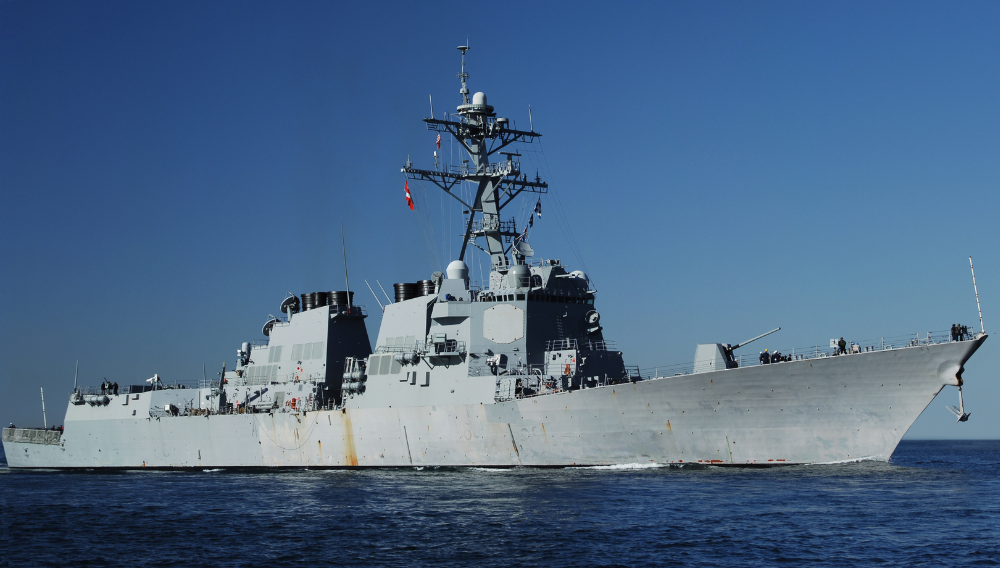
From ancient history when the Navies of the world were formed, each vessel needed multi-ship information sharing, sensor integration, weapons control, fire control and damage control. These activities had been carried out by humans for centuries. The most effective Navies performed these manual tasks efficiently, leveraging repetitive training and processes to achieve coordination of efforts and speed in deploying defensive and offensive strategies in order to win the day.
As technical advancements drove more effective detection and weapons capabilities, the time from detecting a threat to acting on it, now called the “sensor-to-shooter” timeline, has continued to decrease. Human decision-making has been increasingly challenged, especially since the addition of onboard computers to further accelerate the process.
This came to its logical conclusion in the 1960s and 1970s, when autonomy became required in order to respond quickly enough to combat an existential threat to a surface vessel: the sea-skimming missile. Because of late and difficult detection, the time from tracking such missiles until a weapon could counter it meant removing humans from the timeline in a controlled manner. Simply put, autonomy was no longer optional.
Against this strategic backdrop, the U.S. Navy’s Aegis combat system was created to address specific threats to surface vessels. Initially implemented with custom, purpose-built computers and software connected by networks of cables (the Naval Tactical Data System, or NTDS), this system specified and met specific timelines to address these and other emerging threats that challenged the sensor-to-shooter time window. In the early 1980s, the radical acceleration of commercial computing and network capability was taking hold in the marketplace which rendered the NTDS-based systems obsolete. Still, challenges remained in the commercial space for meeting the determinism and predictability requirements needed to meet the ever-shrinking timelines.
In the 1990s, the Navy set up a test bed in Dahlgren, Virginia, to evaluate commercial technologies in the context of Aegis requirements. The High-Performance Distributed Computing (HiPer-D) effort used commercially-available processors, operating systems, and networks in an instrumented large-scale simulation to see if, in fact, a commercial-based system was feasible. Starting with highly-parallel processors, it became apparent that efficient movement of data was more of a limiting factor than raw processing power, so the effort pivoted to a distributed solution, where multiple parts of the timeline could be done independently and information could be shared as needed over networks. This change opened up the door to scalability, even dynamic scalability where computing resources could be added on the fly, without compromising the timelines.
Enabling this expansion required different processors and operating systems for different tasks working in coordination in real-time. However, with a small team of developers, it was impossible to adapt rapidly to changing platforms without a common communication layer. Open standards, such as the Object Management Group® (OMG® ) CORBA standard, were possible solutions, but testing showed the level of determinism and scalability were lacking.
Enter the Data Distribution Service (DDS) Standard
As the new millennium began, two commercial products were on the middleware market that could meet the Navy’s need for that critical common communication layer. Both were capable of running on heterogeneous hardware, operating systems and networking technologies. Network Data Delivery Service (NDDS) from Real-Time Innovations (RTI) and Splice from Thales Naval Nederland (used in the Tacticos command and control system) were found to meet both the scalability and determinism needs of the U.S. Navy and Aegis.
Because the interfaces to both products were proprietary, the Navy worked in coordination with the two companies, users, and the OMG to develop the Data Distribution Service (DDS™) standard in 2004. This effort merged the needed capabilities of both products into one independent, open, portable, and (later) interoperable standard. The knowledge from this effort fed the creation of Navy Open Architecture (NOA) and, ultimately, the DoD-wide Modular Open Systems Architecture (MOSA) initiative.
DDS subsequently became the communication backbone for sensors, command and control, weapons and fire control for most U.S. Navy Surface systems. At the same time, the need for autonomy, determinism, scalability and maintainability has not only expanded to other branches of the Department of Defense, but also to the commercial market. Today, DDS is employed in complex systems across many different industries.
As the world’s leading implementation of the DDS standard, RTI Connext software now runs unmanned control systems (Air, Sea, Subsurface), numerous Mission systems, U.S. Army Corps of Engineers Dam control systems, Space Launch control systems (including the NASA Artemis program), autonomous vehicles, robotic medical devices, hospital systems, air traffic control systems, and more.
This year marks the 20th anniversary of the DDS standard. RTI is both humbled and proud of its leadership role in forming and advancing the DDS standard, which has grown to 14 specifications (and counting). The DDS standard and RTI Connext have enabled remarkable advances in critical system capabilities since 2004, and we look forward to driving new advancements in real-time communications in the years to come.
About the author:

Mark Swick is a Systems Architect with the RTI Professional Services team. With over 40 years of experience with distributed systems, Mark provides system architecture analysis, guidance, and implementation assistance for a wide variety of developers of real-time distributed computing systems using OMG DDS and other communication framework standards.
Mr. Swick’s customers include the U.S. Navy, US Army, U.S. Air Force, NASA, and their prime contractors, as well as commercial developers in the automotive, medical radiotherapy/robotics, and energy systems industries. In addition, Mark has worked in systems and software engineering roles as a U.S. DoD prime contractor, US Navy government support contractor, and as a commercial software vendor. Significant work programs include US Surface Ships (Command and Control, Sensors), U.S. Nuclear Submarines (Acoustics), Space Station Freedom (System Management), Armored Vehicle and Aircraft Simulators (Visual Systems), U.S. Dams (Control Systems), UAV Control Segment (UCS) Architecture, Avionics Systems (Flight and Mission Systems), Radar Systems (AMDR and others), U.S. Army Integrated Battle Command System (IBCS) and NASA’s Artemis Launch Control System.
Posts by Tag
- Developers/Engineer (180)
- Technology (79)
- Connext Suite (77)
- News & Events (75)
- 2020 (54)
- Aerospace & Defense (53)
- Standards & Consortia (51)
- Automotive (38)
- 2023 (34)
- 2022 (29)
- IIoT (27)
- 2025 (25)
- Leadership (24)
- Healthcare (23)
- 2024 (22)
- Connectivity Technology (21)
- Cybersecurity (20)
- 2021 (18)
- Culture & Careers (15)
- Military Avionics (15)
- FACE (13)
- Connext Pro (10)
- JADC2 (10)
- ROS 2 (10)
- Connext Tools (7)
- Connext Micro (6)
- Databus (6)
- Transportation (5)
- Case + Code (4)
- Connext (4)
- Connext Cert (4)
- Energy Systems (4)
- FACE Technical Standard (4)
- AI (3)
- Oil & Gas (3)
- Research (3)
- Robotics (3)
- Connext Conference (2)
- Edge Computing (2)
- Golden Dome (2)
- MDO (2)
- MS&T (2)
- RTI Labs (2)
- TSN (2)
- ABMS (1)
- C4ISR (1)
- DOD (1)
- ISO 26262 (1)
- L3Harris (1)
- LabView (1)
- MOSA (1)
- MathWorks (1)
- National Instruments (1)
- Simulation (1)
- Tech Talks (1)
- UAM (1)
- Videos (1)
- eVTOL (1)
 Success-Plan Services
Success-Plan Services Mark Swick
Mark Swick